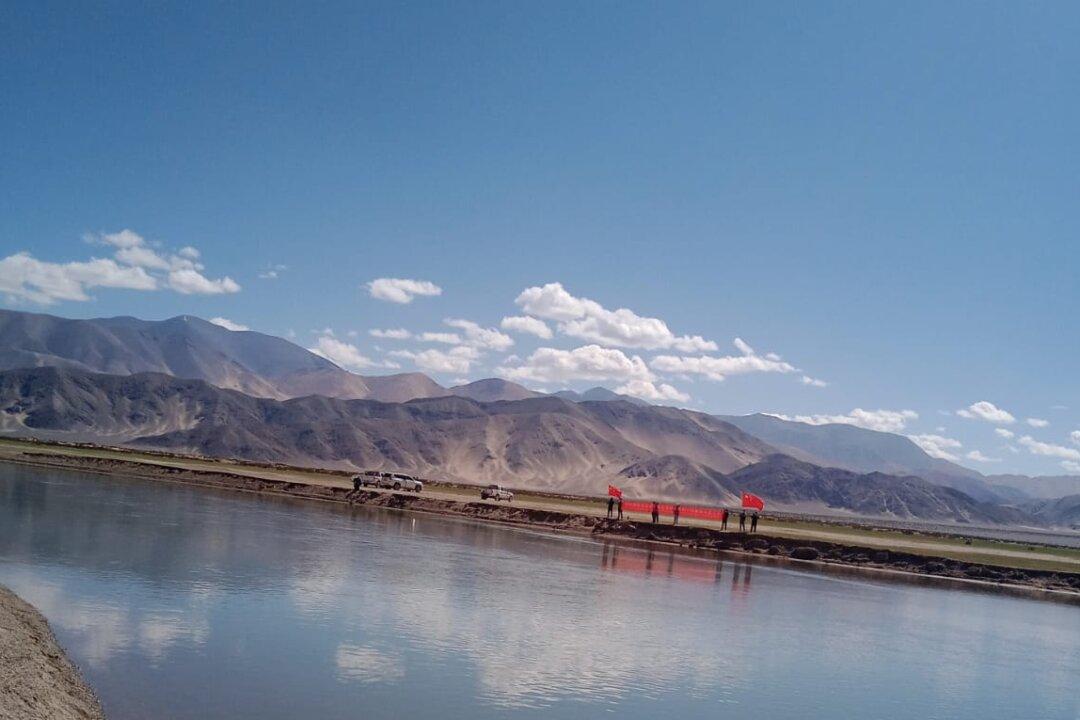NEW DELHI—A group of Chinese nationals hoisted a red banner and five-starred red flags in view of Indian villagers who were celebrating the birthday week of the spiritual leader of Tibet on the opposite side of the Indus River, along the de facto China–India border.
The intimidation of Indian villagers has occurred multiple times recently, Urgain Tsewang, the head of the village of Koyul, in the Nyoma sector of Ladakh, told The Epoch Times. Koyul is a village of around 540 people, most of whom are nomads and laborers.





